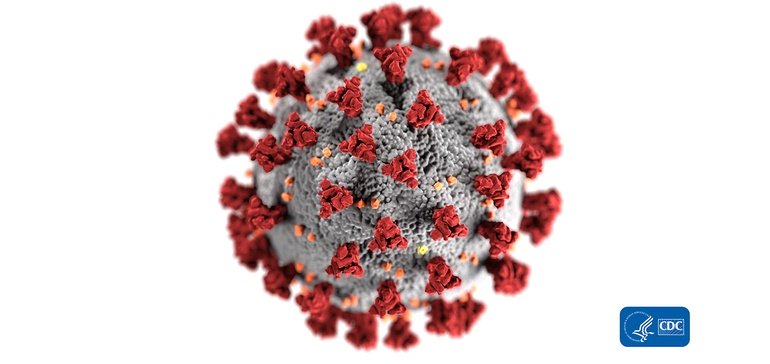Midweek Update / At Last a COVID Pill!

From the Omicron front, STAT News reports that
The Food and Drug Administration on Wednesday authorized Paxlovid, a pill developed and made by Pfizer, as a treatment for Covid-19, a significant step in the battle against the SARS-CoV-2 virus.
The drug was authorized for use in people as young as 12 so long as they weigh at least 88 pounds.
The authorization of an oral antiviral to beat back Covid has been eagerly anticipated because such a medicine could reach large numbers of people infected with the virus and prevent them from becoming seriously ill or hospitalized. Existing medicines, such as monoclonal antibodies, must be given intravenously or as injections.
Still, initial supplies of Paxlovid will be limited. Pfizer has said it expects to produce more than 180,000 courses of the treatment this year. The company said Wednesday it now expects to provide 120 million courses by the end of 2022, up from 80 million previously, thanks in part to new contract manufacturers. Pfizer has contracted with the U.S. government to provide 10 million courses by the end of 2022 at a cost of $5.29 billion.
Once readily available, Paxlovid will be the answer to a positive COVID test, rather than 10 days of quarantine or hospitalization. Jingle bells, indeed.
Speaking of the FDA, MedPage Today informs us that
The FDA approved the first monotherapy for bipolar-related depressive episodes, Intra-Cellular Therapies announced Monday.
The atypical antipsychotic lumateperone (Caplyta) gained an indication for the treatment of depressive episodes associated with bipolar I or II disorder in adults, as monotherapy and as adjunctive therapy with lithium or valproate. It was first approved for adults with schizophrenia in December 2019. * * *
“The efficacy, and favorable safety and tolerability profile, make Caplyta an important treatment option for the millions of patients living with bipolar I or II depression and represents a major development for these patients,” said Roger McIntyre, MD, of the University of Toronto, in a statement released by the manufacturer. “Caplyta is approved for a broad range of adult patients including those patients with bipolar II depression who have been underserved with limited treatment options.”
Switching back to the Omicron front, the Wall Street Journal reports that
New data from Scotland and South Africa suggest people infected with the Omicron variant of coronavirus are at markedly lower risk of hospitalization than those who contracted earlier versions of the virus, promising signs that immunity as a result of vaccination or prior infection remains effective at warding off severe illness with the fast-spreading strain.
The findings begin to fill in unknowns around the severity of the disease caused by Omicron, a major variable critical to health authorities around the world as they gauge how to react to the new variant.
Scientists are still unsure how the positive findings around hospitalizations will stack up against another major variable: Omicron’s much increased transmissibility. Both variables are likely to change depending on local conditions, such as the proportion of the population that has been vaccinated against Covid-19.
“This is a qualified good news story,” said Jim McMenamin, incident director for Covid-19 at Public Health Scotland, and one of the authors of the Scottish study, at a briefing. “It’s important we don’t get ahead of ourselves. A smaller proportion of a much greater number of cases can still mean a substantial number of people that might experience severe Covid infections that could lead to hospitalization.”
From the COVID vaccine mandate challenge front, the Journal also tells us that
The Supreme Court on Wednesday said it would hold fast-track oral arguments early next month to consider whether the Biden administration can enforce Covid-19 vaccine-or-testing rules for large private employers, as well as vaccine requirements for many healthcare workers.
The cases, set for argument on Jan. 7, could go a long way to determining how much latitude the administration has to combat the coronavirus pandemic in the workplace.
The high court issued a pair of short, written orders to schedule the arguments, in response to a growing pile of emergency appeals asking the justices to intervene.
The cases haven’t yet been fully litigated in the lower courts; the Supreme Court will be deciding whether the Biden administration rules can be implemented for now. But practically speaking, the court’s decision is likely to determine whether the requirements survive.
Curiously, it does not appear that the stay of the government contractor mandate will be presented to the Supreme Court. Instead the parties have agreed to expedite briefing and the oral arguments on the merits of the case.
From the OSHA ETS front, the Society for Human Resource Management reports that
Now that a federal appeals court has revived the Occupational Safety and Health Administration’s (OSHA’s) emergency temporary standard (ETS), covered employers will need to prepare a written COVID-19 vaccination-or-testing policy by Jan. 10.Under the ETS, employers may choose to require vaccination or allow covered employees who are unvaccinated to wear a mask and provide proof of a negative COVID-19 test on a weekly basis. The start date for the testing requirement has been extended to Feb. 9, but many other components of the ETS take effect on Jan. 10, such as the requirement for employers to determine the vaccination status of each employee and develop a written policy.
“Keep it simple,” recommended Eric Hobbs, an attorney with Ogletree Deakins in Milwaukee. “Do not include anything in the plan that you can’t follow through on.”
The Supreme Court is unlikely to rule on the OSHA ETS mandate stay before January 10, 2022.
From the Federal employee compensation front, Federal News Network reports that
President Joe Biden on Wednesday signed an executive order making federal pay raises official for many civilian employees in 2022.
As expected, General Schedule employees will receive an across-the-board federal pay raise of 2.2% in 2022, plus an additional 0.5% locality pay adjustment, to total a 2.7% average increase.
An Office of Personnel Management official confirmed the 2.7% federal pay raise to Federal News Network Wednesday evening. The agency hasn’t yet posted detailed pay tables describing pay rates for each locality pay area.
The raises take effect Jan. 1, or more specifically during the first pay period in January.
Under OPM’s regulations, Open Season changes take place on January 1 for annuitants and on the first day of the first pay period in the new year for employees. GSA’s federal employee calendar for 2022 shows that January 2 is the first day of the first pay period for next year.
From the Affordable Care Act front, the FEHBlog apologizes that he left a sentence off yesterday’s post about the current federal fiscal year’s PCORI fee. To close the unintended loop, IRS Notice 2022-04 states that “The applicable dollar amount that must be used to calculate the [PCORI] fee imposed by sections 4375 and 4376 for policy years and plan years that end on or after October 1, 2021, and before October 1, 2022, is $2.79” per bellybutton.









